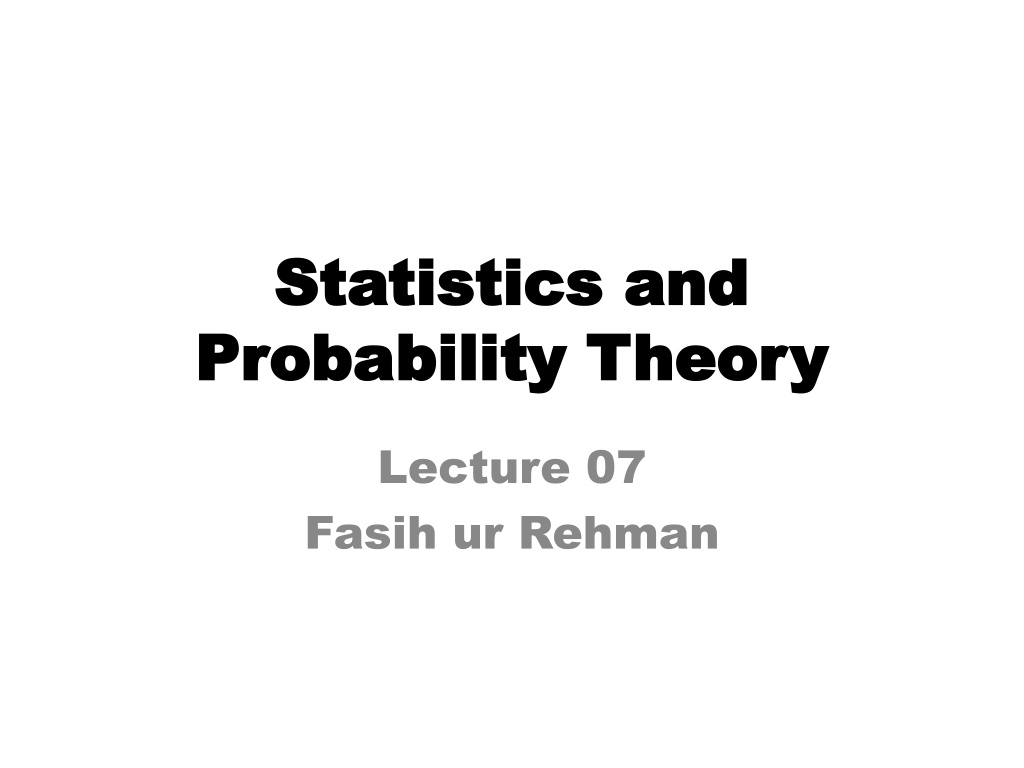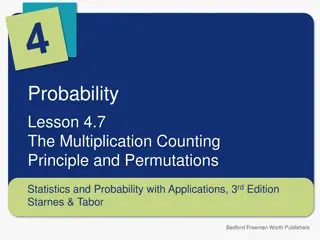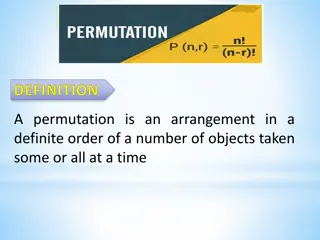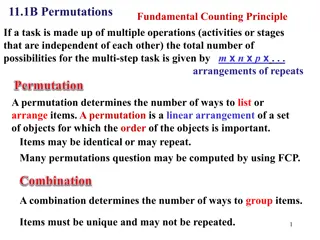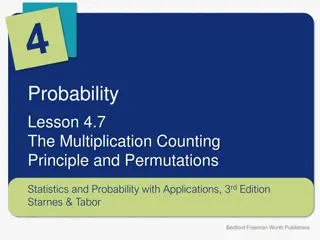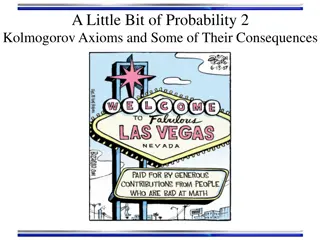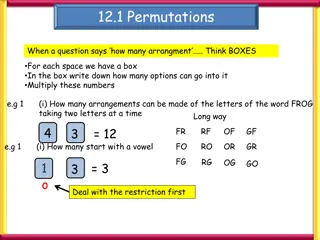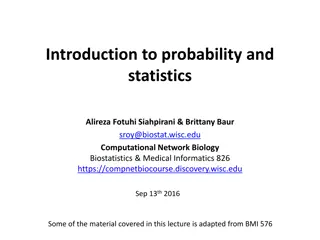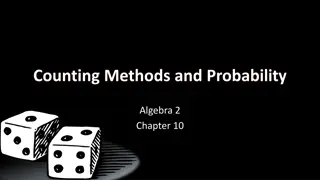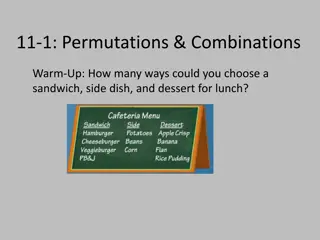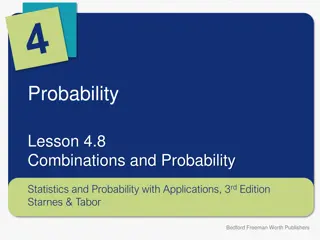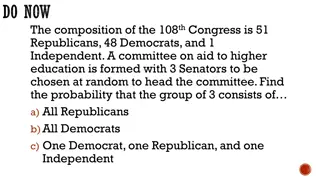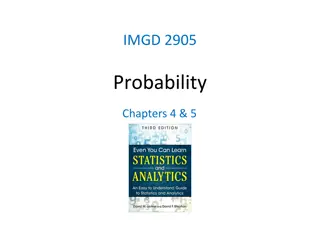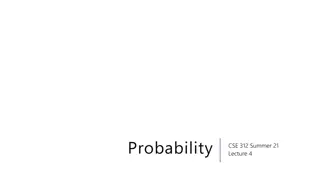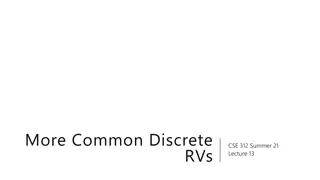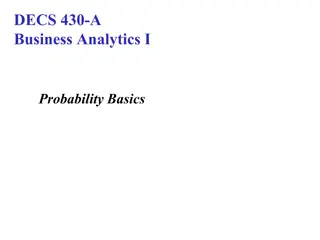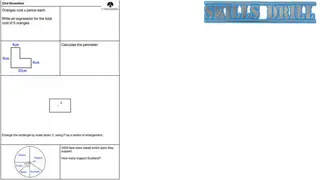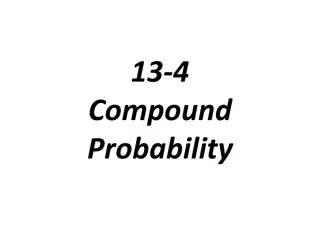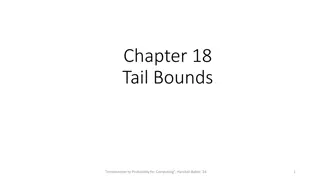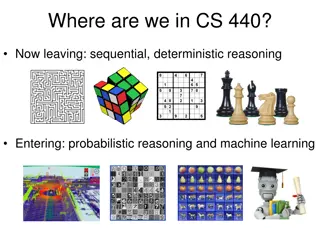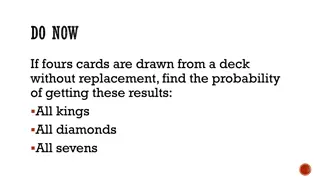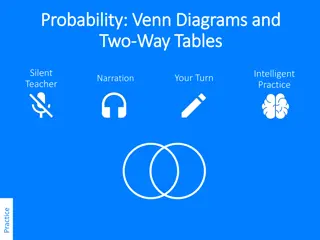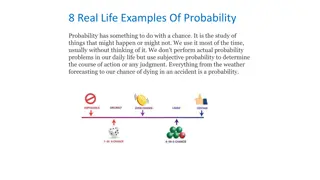Introduction to Probability Theory with Examples and Permutations
Explore the fundamental concepts of probability theory through examples such as dice outcomes, home styling choices, and computer part ordering. Delve into permutations to understand arrangements of objects and calculations of possible selections. Learn about the number of permutations, distinct objects, and possible selections in various scenarios.
Download Presentation

Please find below an Image/Link to download the presentation.
The content on the website is provided AS IS for your information and personal use only. It may not be sold, licensed, or shared on other websites without obtaining consent from the author. Download presentation by click this link. If you encounter any issues during the download, it is possible that the publisher has removed the file from their server.
E N D
Presentation Transcript
Statistics and Statistics and Probability Theory Probability Theory Lecture 07 Fasih ur Rehman
Last Class Introduction to Probability Counting Problems Multiplication Theorem
Todays Agenda Introduction to Probability (continued)
Example How many sample points are there in the sample space when a pair of dice is thrown once?
Example A developer of a new subdivision offers prospective home buyers a choice of Tudor, rustic, colonial, and traditional exterior styling in ranch, two-story, and split-level floor plans. In how many different ways can a buyer order one of these homes?
Example Sam is going to assemble a computer by himself. He has the choice of ordering chips from two brands, a hard drive from four, memory from three, and an accessory bundle from five local stores. How many different, ways can Sam order the parts?
Permutations A permutation is an arrangement of all or part of a set of objects. Consider number of possible permutations of a, b and c The number of permutations of n objects is n!.
Permutations The number of permutation of n distinct objects taken r at a time is
Example The number of permutations of the four letters a, b, c, and d will be 4! = 24. Now consider the number of permutations that are possible by taking two letters at a time from four. These would be ab, ac, ad, ba, be, bd, ca, cb, cd, da, db, and dc.
Example In one year, three awards (research, teaching, and service) will be given for a class of 25 graduate students in a statistics department. If each student can receive at most one award, how many possible selections are there?
Example A president and a treasurer are to be chosen from a student club consisting of 50 people. How many different choices of officers are possible if (a) there are no restrictions; (b) A will serve only if he is president; (c) B and C will serve together or not at all: (d) D and E will not serve together?
Permutations The number of objects into first cell, n2 elements in the second, and so forth, is of ways of into r cells with of partitioning a set of n with n1 elements in the
Example In how many ways can 7 students be assigned to one triple and two double hotel rooms during a conference? Using the rule of last slide
Summary Introduction to Probability Counting Rules Tree diagrams Permutations Combinations
References Probability and Statistics for Engineers and Scientists by Walpole
